Affiliate disclosure: This post may contain affiliate links. Please see our Privacy Policy.
Canning carrots at home is an easy way to preserve carrots and prepare them for quick weeknight meals at the same time.
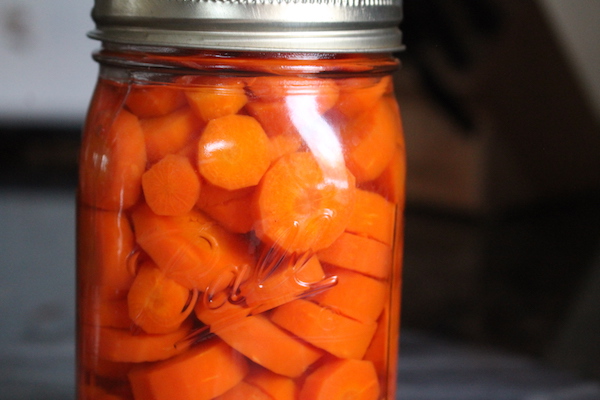
My kids are total carrot fiends, known to demolish several pounds of raw carrots in a sitting (no dip required). At dinner time, they’d happily fill their bowls with nothing but cooked carrot slices (and often enough they do).
But children are fickle creatures, and while this week they may eat 10 pounds of carrots without blinking an eye, next week they’ll forget to eat all together as they spend long days playing in the summer sandbox or winter snow.
It can be really hard to plan ahead, especially when carrots are bulky and take up a lot of space in the fridge.
Canning carrots at home ensures that I always have enough carrots in the pantry to satisfy my tiny carrot eating gnomes, even at a moment’s notice.
Home-canned carrots heat up for a quick side dish, and they also work wonderfully added to soups and stews. I love using them in a quick weeknight beef stew (along with my home-canned potatoes). A whole quart pureed up is perfect for carrot ginger soup too.
Preparing Carrots for Canning
The first step to canning carrots is peeling and slicing. This is technically optional, and you can just stuff whole carrots into mason jars peels and all. (Provided they fit).
To be honest, I hate peeling carrots, and I often skip it when I’m just cooking them up fresh.
For canning though, I’d highly recommend going through the extra effort of peeling your carrots. The peels can turn a bit stringy in the canner, and they have a strong earthy flavor (even when well washed) that will infuse into the whole jar while it sits on the pantry shelf.
If you truly can’t stomach the thought of spending all that time peeling carrots, you can buy pre-peeled sacks of baby carrots and just pour those into the canning jars. I often see that variation in canning groups, when people find cases of baby carrots on super discount and can them up in marathon batches. They’re already pretty small, so you don’t even have to slice them if you don’t want to.
In my case though, more often than not we’re canning carrots from my garden or from the farmer’s market, so peel I must…
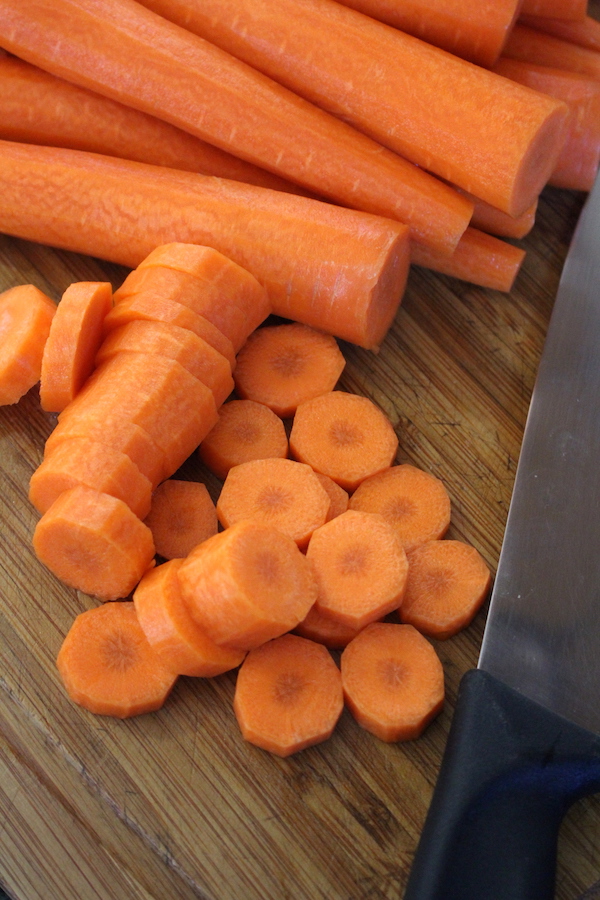
Raw Pack v. Hot Pack
The main question when canning carrots is raw pack or hot pack.
Raw pack means you just place the raw carrots into the canning jars. Cover with boiling water and then load them into your pressure canner. It’s much simpler to be sure, as it’s much simpler to pack cool carrot slices than it is boiling hot ones.
Hot pack often results in higher quality canned goods because it helps remove some of the natural air pockets in the produce before canning. When canning peaches, for example, hot pack is an absolute necessity. Raw pack peaches are an absolute mess.
The conventional wisdom isn’t always correct however, and sometimes it really doesn’t matter whether you do hot pack or raw pack. When I’m canning pineapple, I’ve yet to notice a difference between raw and hot packed fruit, even though all the guides say raw pack has horrible quality. Both are equally spectacular in my opinion.
I’ve found that the quality of home-canned carrots is about the same whether they’re raw packed or hot packed, so you’re welcome to take your pick.
One point of caution, however. If you’re raw packing vegetables for a pressure canner, the canner cannot be at a full rolling boil when you load the jars. Even though you’re pouring boiling water over the raw carrots, the cold veggies cool the water and the jars go into the canner barely warm. Put that into boiling water and you’ve got a recipe for thermal shock (and broken jars).
Be sure that the canner is just warmed up, but nowhere near boiling when you add the carrots. “Simmering” is around 180 degrees F at sea level and “wicked hot” or hot enough to burn the skin is around 140 degrees F. I’d suggest somewhere in that range so that your carrot jars are at nearly the same hot but not boiling temperature as the canning water.
I learned this one the hard way…
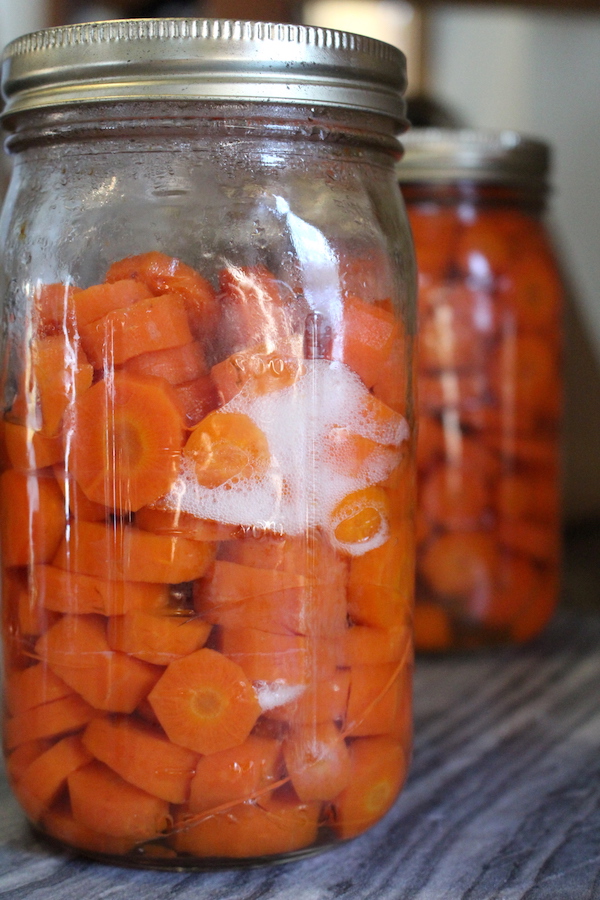
Pounds of Carrots per Canner Batch
The number of fresh carrots needed for a canner batch varies slightly based on the size of the carrots, how much you trim off the ends, and how small you chop (or don’t chop) them before loading them into the jars.
As a general guideline, it takes 16 to 18 pounds of carrots for a canner batch of 7 quarts, or 10-12 pounds for a canner batch of 9 pints. My 30 quart All American Canner can accommodate 14 quarts and that’s my usual batch size. A batch that size requires 30-35 pounds of carrots roughly.
Canning Carrots (with or without Salt)
Adding salt when canning carrots is completely optional, and I generally can carrots without anything added. Just raw pack carrots, top with boiling water, and load them into a warm (but not boiling) pressure canner.
If you do choose to add salt to your home canned carrots, most people recommend adding 1 teaspoon of salt per quart (or 1/2 tsp per pint). That’s completely optional, and up to your own personal taste.
Feel free to omit the salt entirely, as I do, or reduce it to 1/2 or 1/4 tsp per jar for just a hint of salt without a “salty” flavor.
Keep in mind, if you do choose to add salt, it should be canning salt or sea salt rather than table salt. Table salt has anti-caking agents added, and sometimes even includes sugar/dextrose, or all manner of other additives. All that other “stuff” will cloud the jars and is generally not recommended for canning.
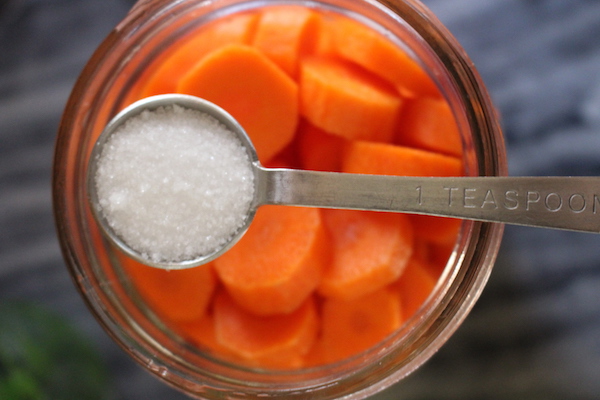
How to Can Carrots
I normally begin pressure canning tutorials with the line “Prepare a pressure canner by filling it with a few inches of water and get it warming,” but when you’re canning carrots you’ll likely need to start prepping the carrots long before it’s time to warm the canner.
Peeling and slicing carrots is by far the most time-consuming part of the operation, and I don’t bother whipping out the pressure canner until I’ve worked my way through all the carrots I intend to can.
If you happen to be canning pre-peeled baby carrots, they’re ready to go, but for the rest of us, the first step is peeling and chopping all your carrots. Once they’re prepped, start warming the pressure canner.
Bring a second pot of water to a boil as well. This will be used as a canning liquid.
For hot pack, blanch the carrots in the boiling water for 5 minutes before packing into jars leaving 1-inch headspace. Top with the boiling cooking water, add salt (optional), and seal jars with 2 part canning lids before loading them into the pressure canner. For this method, the water in the canner can be at a simmer or hotter (at full boil) when loading.
For raw pack, pack the prepared carrots into jars, again leaving 1-inch headspace. Top with boiling water, add salt (if using), seal with 2 part canning lids, and load the jars into your pressure canner. For this method, be sure the water in the canner is at or below a simmer to avoid thermal shock.
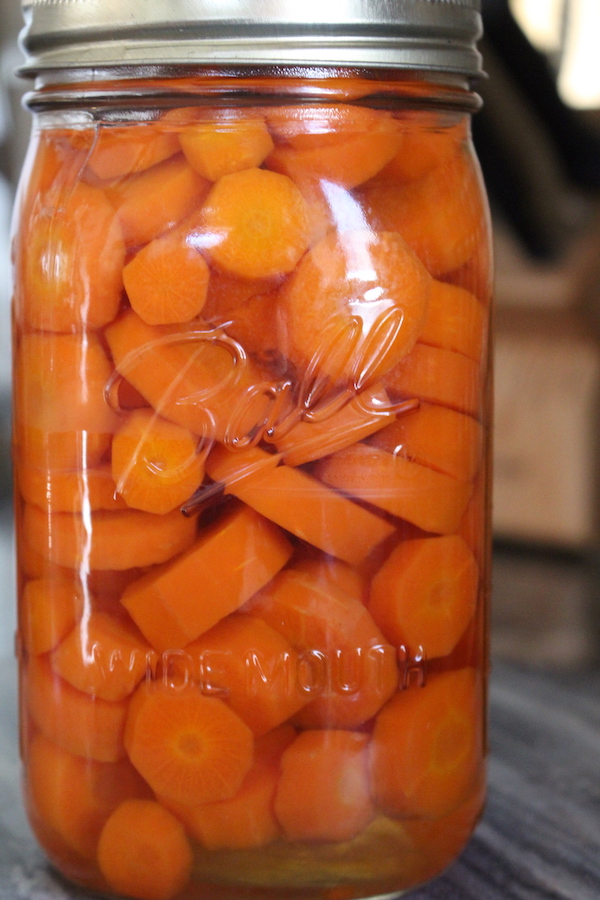
Place the lid on the pressure canner, but not the canning weight. Turn the heat up to high and wait for the canner to begin venting steam. Once you see a steady stream of steam coming out the vent, set the timer for 10 minutes. Allow the steam to vent for a full 10 minutes before adding the canning weight and bringing the vessel up to pressure.
(This steam venting step is important with pressure canning, as it ensures that the whole canning chamber is full of steam. Without this step, there may be cooler pockets within the canner that don’t quite come to pressure, and can result in under processed canned goods.)
After the steam venting step, add the canning weight and bring the canner up to pressure. Process the jars at pressure for 25 minutes (for pints) or 30 minutes (for quarts).
The canning pressure will vary based on your altitude and whether you’re using a weighted gauge or dial gauge pressure canner. Refer to the table below for the correct pressure for canning carrots in a pressure canner.
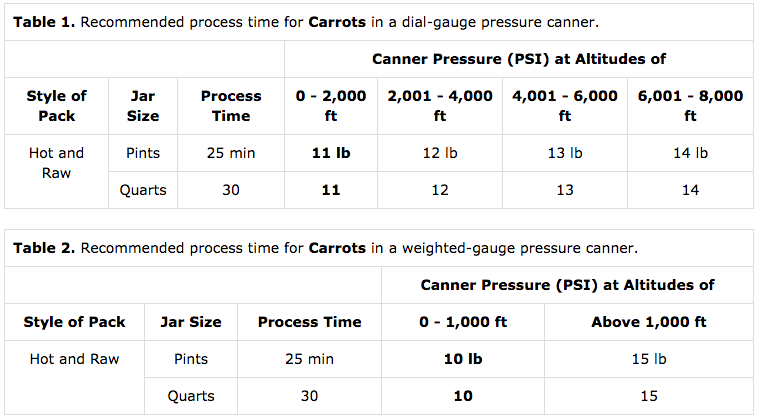
Once the processing time is complete, turn off the heat and allow the canner to cool to room temperature before opening. Check the jar seals and store any unsealed jars in the refrigerator for immediate use.
Properly pressure canned carrots in fully sealed jars should maintain their quality in the pantry for 12-18 months. (Be sure to refrigerate after opening.)
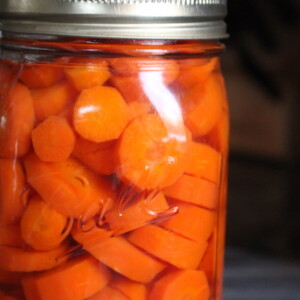
Canning Carrots
Equipment
- Pressure Canner
Ingredients
- 16 to 18 lbs Carrots, see note
- Salt, optional
Instructions
- Prepare the carrots by peeling and chopping. Peeling is optional but highly recommended because it dramatically improves the quality of home-canned carrots. The size of the sliced/diced carrots is flexible, so choose a size that will work in future meals for your family.
- Prepare a pressure canner by warming 2-3 inches of water in the bottom of the canner, with the bottom trivet in place.
- Bring a pot of water to boil on the stove next to the canner.
- For Hot Pack, blanch the carrots in the boiling water for 5 minutes before packing them hot into canning jars (1-inch headspace). For raw pack, just pack the carrots into the jars without blanching, still with a 1in headspace. Be sure the pressure canner is warm, but below a simmer if using a raw pack to avoid thermal shock. For hot pack, use a simmering to fully boiling canner.
- Regardless of the packing method, pour boiling water over the top of the carrots in the jars, maintaining 1-inch headspace. Add salt if using, at a suggested rate of 1 tsp per quart (or 1/2 tsp per pint).
- Seal the jars with 2 part canning lids and load them into the pressure canner.
- Place the lid on the canner, bring the canner to a full boil and allow steam to vent for 10 minutes before adding the canning weight and allowing the canner to come up to pressure.
- Process the jars for 25 minutes (pints) or 30 minutes (quarts). Use 10 pounds of pressure below 1000 feet, but adjust for altitude at higher elevations. (See table within the article for higher elevation canning pressures.)
- After processing is complete, allow the canner to cool to room temperature before opening and unloading the jars.
- Check seals, and store any unsealed jars in the refrigerator for immediate consumption.
- Properly processed, sealed jars should maintain quality in the pantry for 12-18 months.
- As always, be sure to follow the manufacturers instructions for operating your particular pressure canner. Instructions vary slightly between models, and when in doubt, follow the recommendations from the manufacturer.
Notes
Nutrition
Nutrition information is automatically calculated, so should only be used as an approximation.
More Pressure Canning Recipes
Looking for more ways to keep your pressure canner full?
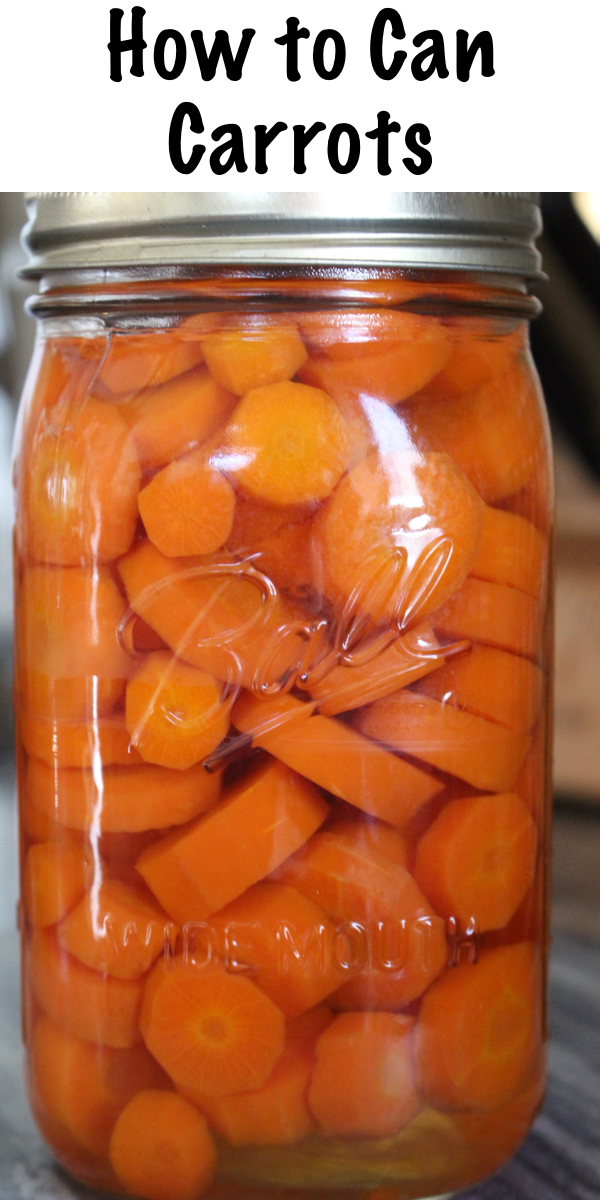
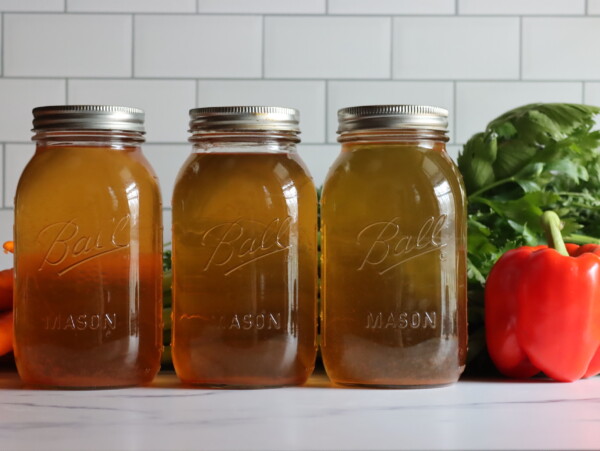
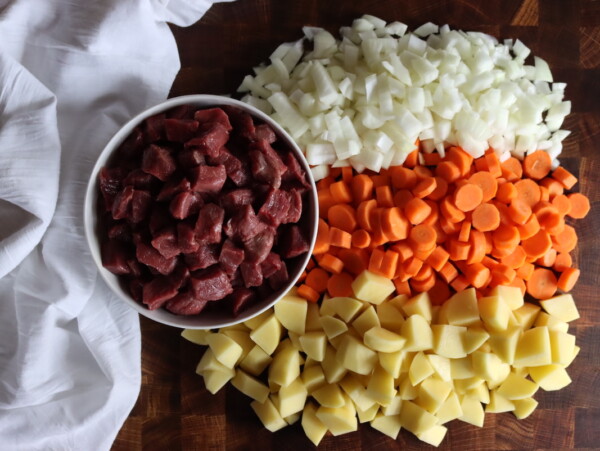
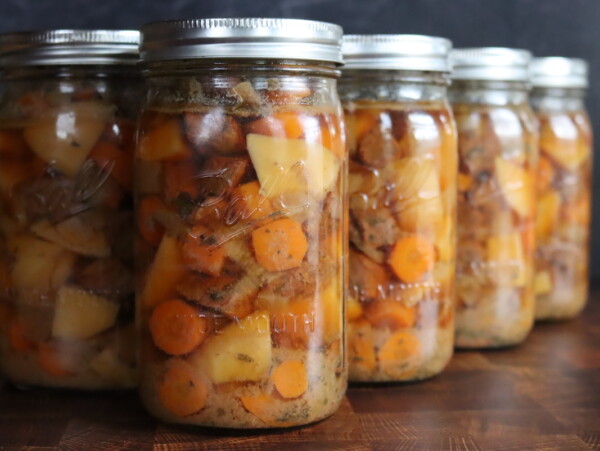










I always look for your recipes when I want to try canning something new. I was given a lot of baby carrots so I decided to can them. I have a small pressure canner (not cooker) that I can water bath or pressure can in. I can only do 5 pts at a time, but that works for me! My carrots are cooling now, I know if I had had more carrots I could have packed tighter. They are currently at the top of the jar, with the extra water at the bottom. Is that acceptable?
Thanks for all of your canning recipes!
As long as you followed the proper procedures and processing times they should be just fine.
Ashley, I came across your site as I was looking to canned carrots. You did a wonderful step-by-step instructions I look forward to doing it! I had a bit of an offsite question, just a tad. I canned cubes squash, raw packed, earlier this year. About one jar in each batch broke at the bottom, as you speak of. But almost all the jars ended up with about a 2-3 inch head space, which caused me to put all of them in the fridge for Storage because I was nervous. For the life of me, I can’t figure out what I did wrong. Granted, I am new at this. Any ideas?.
It sounds like you may have had a bit of siphoning. It’s perfectly safe as long as the jars are sealed and no more than half the liquid has been lost.
Last year I pressure canned all the carrots from my garden and was so disappointed they all turned to mush! I followed your instructions, but I’m wondering if it took too long for my canner to build up the pressure. Any suggestions?
Carrots can be mushy if you aren’t using a long storage variety. Do you know what type of carrot it was that you grew?
Hi, I’ve worked hard to trouble shoot my presto canner, it is a new one and it has reached the 10pounds for my elevation, but recently it only goes up to 6 pounds of pressure, are my carrots ruined? I went ahead and cooked them for 30 minutes are the 10 minute steam release, help please!
If the canner did not hold pressure then I wouldn’t trust them to be shelf stable. I would recommend having your canner tested.
Greetings from Prince Edward Island, Canada. Excellent post. I just put down some green beans, and was wondering about carrots. I have the All American 915, which can do eight pints. Carrot crop good this year and this was a good primer. 25 minutes vs 20 for my beans. Good notes on the thermal shock, I’ve been burned on that one a few times. My purple (now green) beans are sitting comfortably for 24 hrs before I move them
How timely, I just was thinking about doing something with all the carrots in my fridge. I remember years ago, enjoying carrots in a restaurant that the owner had processed with a tomato sauce. It was so good. (It was a long time ago, and these things were allowed, I guess.) Have you ever heard of this?
That’s very interesting. I haven’t heard of that. You might want to do a little research and see if you can find a tested recipe for it somewhere. If you do, please come back and share.
I pressure canned carrots and found them way to soft afterwards for stews or soups. Help!
The main thing with pressure canning carrots if you need to use those hardy storage carrots, which hold up great to canning. The sweet tender summer carrots you can get at the farmer’s market tend to get way too soft in canning.
I want to start canning carrots but don’t have a garden and would need to can store-bought carrots. You said about long season carrots not coming out mushy, so I’m wondering how I can know which carrots at a normal grocery store are “long season” carrots?
Generally (at least around here) the bulk sacks of carrots (like 5 or 10 lb bags) tend to be of storage carrots. The tender summer carrots are smaller and sometimes have tops still attached. This time of year it’s tricky though, since in the spring it could very well be carrots held over from the pervious year (storage) or early quick season carrots (depending on where you live). That said, your best bet is generally the inexpensive bulk packs of carrots, and I’d buy a few bags and do a test batch to see.
I just finished a batch of 10 pints of carrots. They turned out beautifully! I peeled, cut up, and boiled for about 5 minutes before putting into hot jars. I used some of the cooking liquid and boiling water to cover them. They look so pretty! I can’t wait to open a jar and eat them. Thank you for all your canning advice and for helping us newbies can safely.
You’re welcome! Congratulations on getting it done. So glad you are enjoying the posts.
I leave carrots in the ground all winter and heavily mulch over them so they don’t freeze and can be dug out. You need a lot of mulch, like a foot or more of hay or pine needles. Sometimes I store some in a cold cellar and they seem to get sweeter as they age. The key to storing carrots is to use the right variety. Don’t peel or wash them. Just dig them up when the ground is cold and keep them in a bucket covered with sand in a cold cellar. 42 degrees F is ideal. My favorite variety is Royal Chantenay. It’s a fat tapered carrot that keeps well and grows well in my soil providing the soil is deep enough. It’s early February now and today I plan to go out and dig some carrots. No canning needed.
I only have half-pint jars. Could I can carrots in that size?
You can always use a smaller jar than a tested recipe calls for and just process it for the same amount of time as the suggested jar size. Just don’t ever use a bigger jar than a tested recipe calls for.
Normally blanching anything is followed by an ice bath. Is this advisable when canning carrots? Earlier in your article, it says to heat a second pot of water to use as the boiling liquid that covers the carrots in the jars. Then it says to use the cooking liquid. Is it necessary to have the second pot, or should I just be using the liquid from blanching the carrots? When I learned to can a hundred years ago, it was necessary to boil the jars and the lids before filling the jars. Has this practice been discontinued?
The reason for using an ice bath when blanching is to stop the cooking process in order to prevent certain vegetables from being overcooked. You do not need to do this when canning. Using the cooking liquid is fine. Jars and lids only need to be sterilized prior to canning if they are processed for less than 10 minutes in a water bath canner.
If i hot pack and then pressure can don’t the carrots come out mushy when you go to use them?
It depends on the type of carrots you use. The really hearty winter storage carrots can beautifully and don’t get mushy. Summer carrots, also known as short-season carrots, ready in 60-70 days to maturity have a finer grain, don’t really hold up to canning. Get the long season carrots and they stay firm even when cooked then canned.
In my canning book it recommends that you boil canned carrots for 10 min before eating. Does thos make them mushy, and do you do this?
Older canning books recommend boiling all low acid veggies for “10 minutes in an open vessel” after it comes out of the canning jar, but before serving. That’s because old school canning instructions (like water bathing veggies) didn’t actually destroy botulism toxin, and they’d just boil it out of the jar to denature the botulism toxin before serving. Kinda risky in my book, and most people don’t know that’s why people were able to get away with water bath canning veggies in my Grandma’s day.
Anyhow, anything that’s properly pressure canned following the latest USDA instructions does not need to be cooked coming out of the jar. In fact, you could just pop these open and eat them cold with a fork, provided you’ve canned them correctly. Out of an abundance of caution, I do often cook things out of canning jars for 10 minutes if I’m going to be heating them, especially if I’m cooking them for my kids. This is in theory, unnecessary, but they’re my babies and I’m careful with them.
Anyhow, when I re-boil the carrots for 10 minutes out of the jar they don’t get mushy, they’re still good provided you’ve used a firm storage carrot (rather than short-season carrots, which get mushy in canning anyway).
Hi Ashey
How can I tell the difference between short- and long-season carrots in I’m getting them from someone else?
Thanks
I would start by asking them what variety they are growing and then you can research it to see if they are a short or long season variety. If the person you are getting them from is a canner, then you can also ask them if they can well.
Ok
Thank you
You’re welcome.
I think you need to peel carrots before you can them. Here is an article that explains why: https://www.healthycanning.com/why-you-have-to-peel-some-vegetables-for-home-canning/#:~:text=for%20home%20canning-,Why%20you%20have%20to%20peel%20some%20vegetables%20and%20fruit%20for,thrifty%20and%20nutrition%2Dwise%20cook.&text=The%20reason%20is%20to%20reduce,the%20canning%20process%20even%20starts.
Yes, it is recommended that you peel carrots when canning.
I found your post while looking for info on canning carrots — a first for me this year. I’ve been canning for many years (actually, several decades) and have never heard of the steam venting process before. I use a weighted Mirro canner and have always followed the directions that came with it, which never mentioned venting the steam before weighting. Why doesn’t the 10 minute venting reduce the amount of water in the canner to the point that it won’t sustain steam for a 25 minute canning?
I think I’ll try this on my next batch, as I’m curious if it will make a difference.
Thanks for the excellent post!
Hmmm…that’s a good question. I’ve never seen a pressure canner that didn’t have that instruction on the label, but I’ve only seen a few models (presto, all American). I’ll have to check into mirro, but I would have assumed it’s the same? As to the liquid loss, at least with an all American it has you put in quite a bit of fluid to start, and it always ends with several inches of water at the bottom (I was worried about it running dry too the first few times I ran it many years ago, but there’s always plenty in there if you start with 3 inches of water in the bottom.)
I can several quarts of carrots last year and they turned out mushy when we opened them to eat. Can you guide me as this not to happen
Hmm, we’re they young, fresh carrots? Typically canned carrots can be soft, but not mushy like store-bought.
My carrots were mushy also. I would like them a bit crispy. I live at 5,000 feet so I have to use 13 lbs of pressure for 25 or 30 minutes. Do you have any tips? They are only good for a puréed soup at this point. I have more carrots to can do any help us appreciated.
It’s most likely the carrot variety. In the future, I would suggest using a carrot that is more firm and that is specifically grown for storage.
I spent all day on your site, it was so intriguing. Thank you for providing all that information for us newbies. You inspired me to order a pressure canner and to can my garden vegetables this year instead of freezing them. Did I miss it or do you have information on how to can kernel corn? That’s our family’s favorite. I also have another suggestion. Do you use seeds from this year’s harvest to plant next years crop? If so, do you have information on how to do that successfully? I’m particularly interested in learning to harvest tomato seeds. If you’ve already got that information here, could you direct me please?
Hi Elaine!
I actually just posted thorough instructions for canning corn (though it wasn’t up when you wrote your comment). You can find it here: https://practicalselfreliance.com/canning-corn/
We do save seed, and it’s actually reasonably complicated based on the crop you choose. Tomatoes are REALLY EASY though, since the flowers are largely self-pollinating. Really, all you need to do is extract the seeds and wash them really thoroughly in a fine-mesh strainer, then dry them before storage. In theory, they have a germination inhibitor on the outside of the seed that lowers germination rates unless they’re fermented, but we’ve never had issues with that. I actually have 10-year-old tomato seed I’ve used (no fermentation) and I still get near 100% germination rates.
If you want more detailed instructions though, you can find them here: https://www.southernexposure.com/saving-tomato-seeds/
If you want to try something fun, just cut you tomato into slices and add those slices to some nice soil in a pot and water gently. I’ve gotten all variety to sprout and produce viable fruit from this method — even so called hot house matos. It’s great with peppers that start going a bit moldy too.
Thanks for sharing.
How long do they need to go in the canner for 8 oz jars?
Use the same time as for pints.
If I don’t have a pressure canner can I still can carrots?
Only if you make pickled carrots. They cannot be safely canned in a water bath as plain carrots because they’re a low acid food, but you can acidity the liquid by using a brine made from at least half vinegar (5% acidity). If pickled, you could can them in a water bath canner.
How long do I water bath my carrots if I am dilling them? Does it have to be a rolling boil?
Are you asking about the processing time for pickled carrots?
Yeah. I was asking how long the processing time was and if at a rolling boil? Thank you for replying back. Sorry if I didn’t word my other comment correctly.
Here is a post that has all of the information you need for canning pickled carrots. It has several different recipes for you to choose from and includes the processing times.
I canned carrots the other day. They turned out fine, but some of the carrots were not covered with water. Are the going to be ok? Please help. New to canning. Thanks
Yes they should be perfectly fine as long as they were processed properly. You may see a little discoloration with the ones that are above the water but they are still safe to eat.
Yes. Though the USDA and many others do not advocate it, you can water bath meats/vegetables but it will definitely be for a longer period. I don’t consider the USDA an “authority” but it would definitely be your choice. Taking a food handler’s course would be helpful towards hygiene safety. I would start easy with tomatoes or fruits to get the hang of canning before moving on to vegetables and ultimately meats.
We would never recommend water bath canning low acid vegetables. There is no need to risk botulism which is a deadly food poisoning when there are safer solutions available. Low acid vegetables should either be pressure canned or pickled before water bath canning.
Canned 4 quarts of organic carrots earlier today. One jar that sealed had siphoned out 1/2 the liquid so we had it as a side dish for dinner tonight. My bad for not ensuring the band was tight enough before starting the process. I just added a little pepper and some butter during the reheat process. Soft, but not mushy with a decent flavor. Definitely a keeper canning recipe. Some of the washed peels and ends went out to my chickens for a snack. The rest I saved in my freezer to add to some bone broth I will be making later this week to can.
I can my carrots when I open jar there were all smouchie any reason why
You may want to look for a different variety that is more firm and grown for storage.
Before I canned them they were very firm
Most carrots are going to feel firm when they are raw but there is a difference in carrot varieties that are grown specifically for long term storage and those that are grown for fresh eating.
Very thorough and easy to follow info.